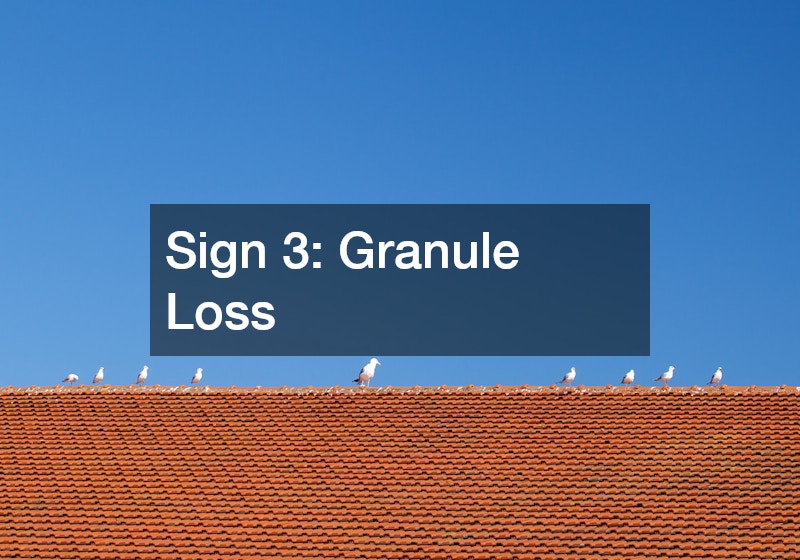Your roof is one of the most critical components of your home, providing protection from the elements and contributing to the overall structural integrity of your residence. However, many homeowners often overlook the early signs of roof deterioration until it’s too late and costly repairs become necessary. In this article, we will explore the key signs that indicate the need for a roof replacement, ensuring you’re equipped with the knowledge to act swiftly. Understanding these signs can help you prevent further damage and maintain the safety and value of your home. So, how do you know if you need a new roof?
Sign 1: Age of the Roof
An important factor in determining whether you need a new roof is its age. Most roofing materials, like asphalt shingles, have a life expectancy of 20 to 25 years.
If your roof is nearing or has surpassed this age range, it might be time to consider a replacement. Aging roofs can become less effective in protecting your home against the weather and may develop extensive wear and tear. Staying proactive about replacing an old roof can prevent more severe problems down the line.
Even if your roof’s age is within the typical lifespan, it’s still necessary to evaluate its condition regularly. Factors such as climate, installation quality, and maintenance can impact the longevity of your roof. For instance, roofs exposed to harsh weather conditions may deteriorate faster than those in milder climates. By staying aware of your roof’s age in combination with its condition, you can better judge when a replacement may be needed. Ignoring these indicators can lead to significant and costly damage to your home.
As technological advancements continue, newer roofing materials offer enhanced durability and energy efficiency. Replacing an older roof can be an opportunity to upgrade to a more modern and efficient system. This can potentially save on energy costs over time while also increasing your home’s value. Additionally, newer materials often come with longer warranties, providing you with peace of mind. Evaluating the age and condition of your roof is crucial in making an informed decision about replacement.
Sign 2: Visible Damage
Visible damage to your roof is another clear indicator that you may need a new roof. Common signs of damage include missing, cracked, or curling shingles. These issues can be caused by harsh weather conditions, poor installation, or simply age. Once shingles become damaged, they can no longer effectively protect your home from water intrusion. Addressing visible damage promptly can prevent leaks and other more severe issues.
Water stains on the ceiling or walls inside your home can also point to roof problems. This may indicate that water is penetrating through damaged areas of the roof. If you notice any damp spots, it’s crucial to inspect your roof for damage immediately. Left unchecked, water damage can weaken your home’s structure and lead to mold growth. Prompt repairs or replacement of your roof can protect your home from such risks.
In addition to shingle issues, inspect your roof for signs of sagging. Roofs that appear uneven or sagging may have structural issues that require attention. Sagging can signal problems with the roof’s decking or damaged support structures. This not only affects the appearance but also the safety of your roof. Consulting a professional to assess the extent of visible damage can help you determine the best course of action.
Sign 3: Granule Loss
Granule loss can be an indication that you need a new roof, especially if you’ve noticed an increase in granules in your gutters or around your home’s foundation. Granules are essential as they help protect shingles from the sun’s ultraviolet rays. Over time, these granules can wear away due to age or severe weather, leading to a compromised roof structure. If granule loss is extensive, shingles may become brittle and prone to cracking. Addressing granule loss can prevent further damage to your roofing system.
It’s also important to consider the cause behind granule loss. New roofs may shed some granules naturally, but continual loss is a cause for concern. Harsh weather can exacerbate granule wear, leading to quicker degradation of your roof’s surface. By removing granules, the underlying layers of shingles become exposed and vulnerable. To preserve your roof’s integrity, it’s necessary to respond to granule loss with timely inspection and potential replacement.
Regularly cleaning your gutters can help you monitor granule loss effectively. Checking for excess granules as part of your routine maintenance can give you insight into your roof’s condition. If you observe an alarming amount of granules, it might be time to contact a roofing professional for an assessment. They can determine whether your roof merely needs repair or if a full replacement is more appropriate. Catching this issue early can prevent further damage and expense.

